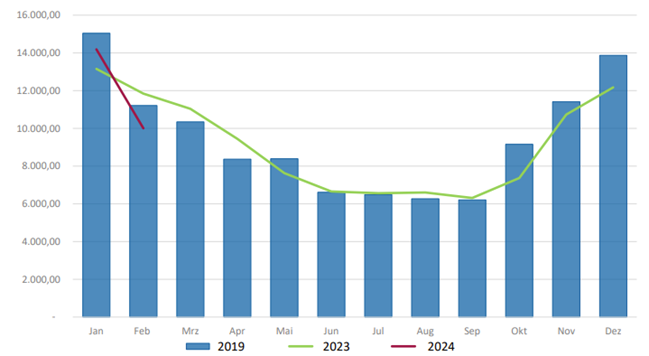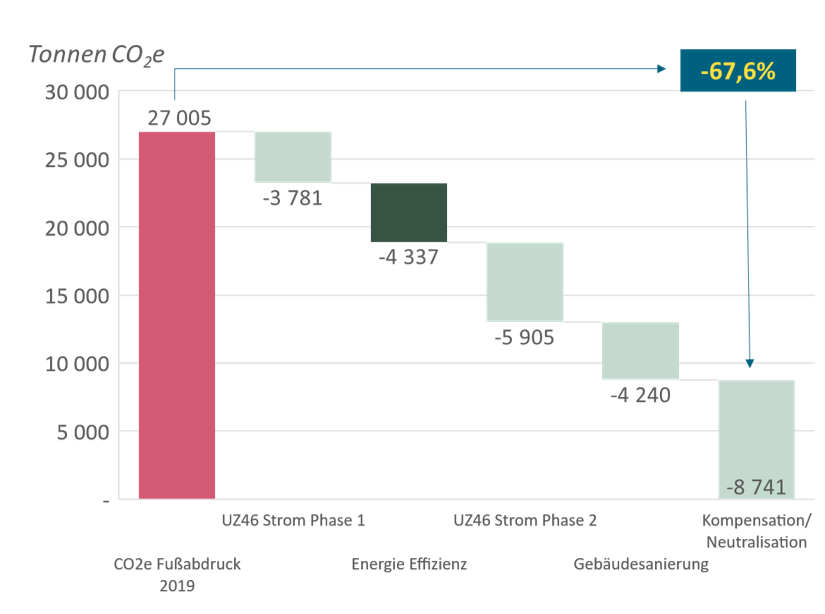On the path to climate neutrality: ambitions in the area of our energy & buildings
The University of Vienna has set itself the ambitious goal of becoming climate-neutral by 2030, based on the greenhouse gas balance from 2019. A large part of the planned emission reductions will focus on our energy and buildings.
Progress in 2023: A look at the results
The year 2023 marks significant progress on this path, to which several effective measures, such as switching part of the electricity supply to UZ46-certified electricity, have contributed.
Despite the addition of the new UBB and Kolingasse 14-16 sites, overall energy consumption was also reduced by 5 percent through optimized operational management, modernized lecture hall ventilation, demand-based lighting and initiatives such as “Switch-it-Off”. All of these efforts have contributed significantly to reducing greenhouse gas emissions from our energy and building sector by a total of 23% in 2023 compared to 2019.
Energy consumption in 2019, 2023 and 2024

In 2023, energy consumption was reduced by 5 percent.
Future ways to further reduce emissions
In order to continue to consistently pursue the goal of climate neutrality, the university is focusing on a continuous energy efficiency program and the full use of UZ46 electricity from 2025. A comprehensive renovation plan for the buildings is also part of the strategy and, when implemented, should reduce energy consumption by a further 12%. The planned installation of photovoltaic systems at various locations, as is currently the case at UZAII, will also contribute to these efforts.
Roadmap to climate neutrality in our energy and buildings sector

In order to reduce emissions from this sector by two thirds, a switch to climate-neutral electricity in two phases, energy efficiency measures and building renovations are necessary.
Recognition and thanks to the university community
Special thanks go to all employees and students, especially the Facility and Resources Management team, who are making a significant contribution to the implementation of these sustainable measures. We would also like to thank everyone who submits “Switch-it-Off” tickets or actively works to reduce resource consumption.
